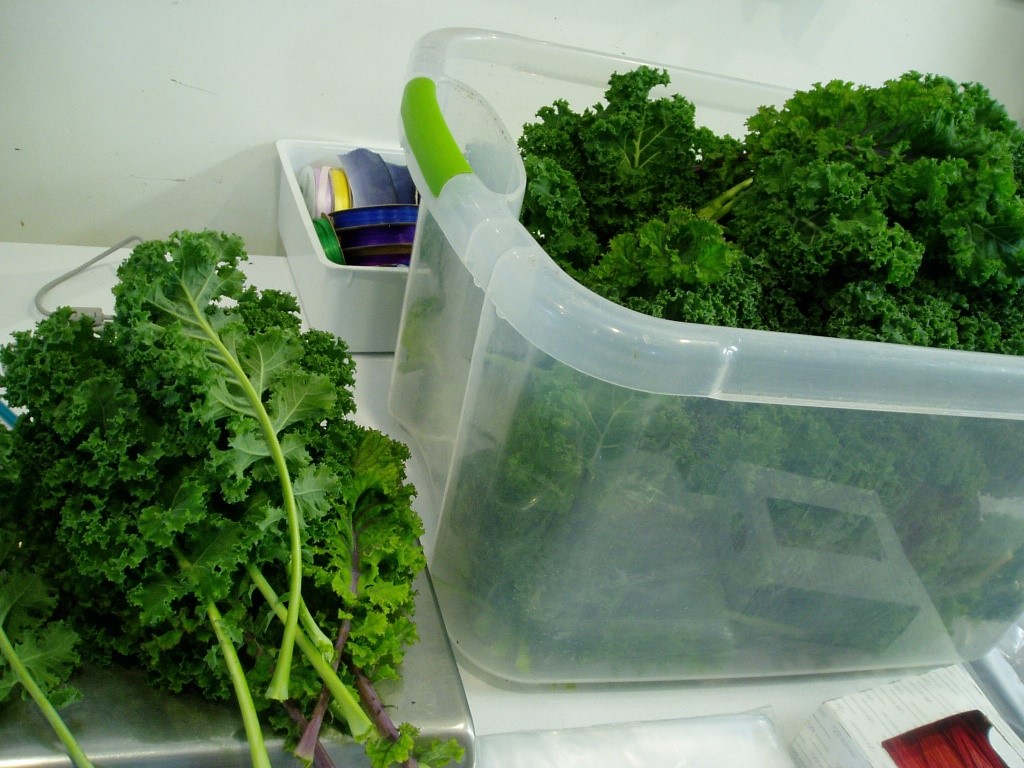Valuing a Local Choice

The most recent wave started up right before Thanksgiving—massive recalls of romaine, turkey, beef, then romaine again. Folks heading north to their cabins stripped Farmstead’s shelves of all available lettuce, and this last week’s farmer market at NorthLakes Community Clinic was the busiest ever.
Sometimes we can feel at the mercy of the industrial food system, but we don’t have to be. There are valuable and viable alternatives in our midst. In this article, I’ll unpack elements of what is happening in the agribusiness food system, why it leaves the consumer vulnerable, and the alternative choices you can make.
The industrial food system we have today began in earnest with the “get big or get out” push in the 1970’s and 80’s. It was believed that larger scale operations were more efficient, with their consolidation of acreage and massive equipment. But with consolidation comes the loss of finesse. For instance, a farmer working thousands of acres of wheat wants to harvest those acres all at once. But there may be hillocks or swales that are not ripe yet. The industry standard for this issue is to spray the entire field with glyphosate (RoundUp), which kills the wheat, causing it to finish ripening. The green plants, however, suck up the glyphosate in their dying moments, even into the seed head, which we eat. Recent studies are linking the consumption of glyphosate to many intestinal ailments because it kills the beneficial flora in our gut.
While unsanitary irrigation water may be the cause of the latest romaine scare, massive-scale vegetable operations face many biohazards. This includes packing and wrapping produce directly in the field—fields where the workers have no access to bathrooms or hand washing stations. Produce that is small or chopped after harvest (think spring mix or pre-chopped romaine) might be initially harvested by machine before being brought to a centralized chopping and bagging warehouse. These facilities handle literally tons of product, and if contamination comes through the system, it can seat on blades and baggers and be a veritable nightmare to clean, especially when the incentives to the company are to keep those machines running without pause as much as possible.
Industrial meats should be a huge concern to everyone. CAFOs (Concentrated Animal Feeding Operations) not only raise food animals in torturous conditions, but they also become breeding grounds for super-germs. 60% of deaths from community acquired MRSA (Multi-drug Resistant Staphylococcus Aureus) happen to residents within 15 miles hog CAFO’s. Super bugs like dangerous strains of E.coli come into the meat packing plants with the animals, causing high risks of cross contamination on the machinery, for the workers there, as well as for the end-user consumer.
And this is only a glimpse into the ailments of an oversized, centralized system that relies heavily on shipping products cross-country. Half of our nation’s food is wasted before it even reaches the grocery shelves, and now people are growing sick or dying due to contaminants. What is the solution to this problem? How can we build a system that offers a viable alternative?
In Michael Pollan’s book, The Omnivore’s Dilemma, he delves directly into this question—exploring the industrial food system, hunter gatherer methods, organics, and local food systems in great and entertaining detail. At the end of his adventure, Pollan concludes that local food systems are the best solution. Here are some key points why.
Accountability: When we are able to purchase foods directly from small growers in our area, we build a relationship with the hands that tend the process from soil to finish. No longer nameless, faceless employees out there somewhere, these are real people in our community. This builds integrity, and the small producers who consistently provide clean, healthful products will garner longevity in their customer relationships.
For instance, at the recent farmer market, I spent considerable time explaining how our aquaponics greenhouse works—that because tilapia fish are cold blooded, they cannot carry harmful germs like E.coli, campylobacter, and salmonella. In the wake of the food scares, people wanted to know how my food was being grown, and they had the luxury to be able to speak with the person who grew and harvested the lettuce before choosing whether or not to buy it.
Lowered Transportation Costs: In each step of an industrial food process, there are critical points where contamination can be an issue. There’s mountains of paperwork and licenses that accompany the process, but they are not bullet proof. A shipment sits on the loading dock too long, foods finally make it to shelves but the produce is exhausted, and chemicals are used to keep them looking perkier longer like bleach or nitrogen gas.
In a local food system, there is no need for the train of middle people and infrastructure to connect growers with consumers. Instead of traveling thousands of miles across the country, I spend the day before a farmer market harvesting produce from the greenhouse, bag it, tuck it in the walk-in cooler, then pack it in my car in the morning and drive the 20 miles into town. It’s amazing how much longer produce lasts that arrives really fresh and clean to the consumer. Spring mix lasting in the fridge for two weeks? Yes, it can happen. But what’s more important is the peace of mind gained by knowing that handling and hazard points were minimal.
So, instead of feeling like you are a victim of the system, find ways to be an active participant in the solution—building vibrant local foods choices. I can’t grow enough produce, pigs, chickens, turkeys, or lambs for everyone in the county, but envisage a day when people like me can thrive in every community across the country, providing high-integrity food direct from producer to consumer.
Learn what is available in your area. This might take some digging, but your health and safety are worth it. See you down on the farm sometime.






